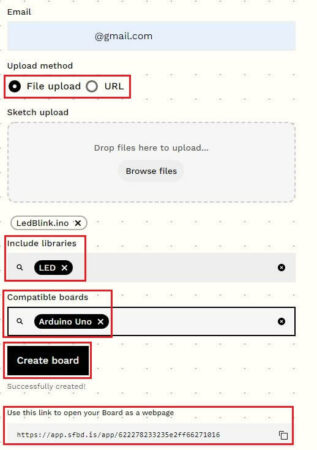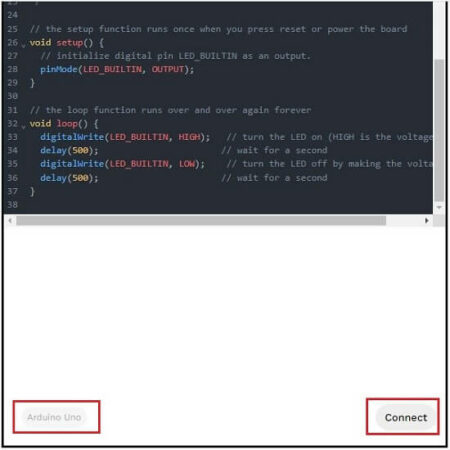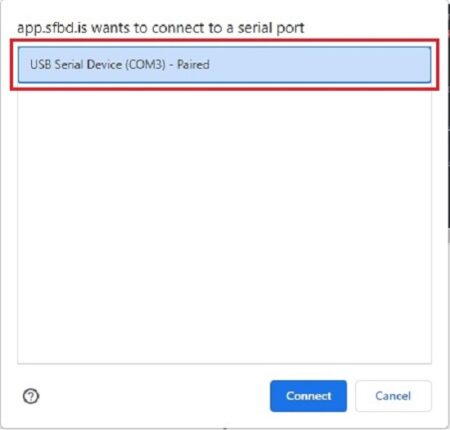Surfboard is a free widget, that allows you to ‘Sandbox’ your code and share it with others right from your browser. Its development environment includes 4200 libraries and is compatible with over 170 microcontroller cards for executing your code.
A ‘Sandbox’ is an isolated and integrated testing environment that allows software developers to execute programs without affecting the system or platform on which they run. It’s a great tool to test new code which is still in the development phase.
With Surfboard you can also share your project quickly with the development community as a URL link or HTML Embedded code. This helps you to gain their reviews and improvise your code.
Surfboard is superfast and requires absolutely no formal setup. We tested it with three boards viz, Arduino Uno, Arduino Mega 2560 and the EPS32-CAM and it worked successfully.
Here are the steps to use Surfboard and Sandbox your code:
- Navigate to the Surfboard website from the link available at the end of this article.
- Upload your code from your local disk or provide a URL to it.
- Include any libraries from the huge list if your code references them.
- Search and select your board from the list of compatible boards.
- Click on ‘Create board’. Once it is successfully created you can use the URL link that is provided, or the HTML embed code to start working.

- Connect your board like Arduino Uno, etc. to your system and install the required drivers (if any).
- Copy-paste the board URL in your browser and press ‘Enter’ to load the ‘Sandbox’. Your uploaded code will be available here in the box.

- Click on ‘Connect’ and select the COM port to which your board is connected.
- Click on ‘Connect’ in the popup window and the Sandbox establishes a connection to your hardware board.

- Click on your board name on the main screen and click ‘Flash’.
- Your code is finally uploaded to the microcontroller of the board and it starts functioning depending upon the code.
The interesting part is that once your share your URL, developers can seamlessly interact with your widget, edit, compile and upload the code into their boards – right from the browser.
Downside:
- The shared widget (sandbox) is unable to communicate with the Arduino Uno and some other boards in case you are using Mozilla Firefox.
- Once you modify any code in the widget and ‘Flash’ the board once again, it fails to do so.
Verdict:
Surfboard is a very good sandboxing tool to flash your microcontroller boards without affecting your system and the platform. The fact that the sandbox can be shared makes it easier for you to involve and take the advice of the development community. This will really help you solve your problems with developing your projects. The Surfboard developers should do good to take care of the few bugs in their tool so that the reach can be widened and for increased acceptance.
Do you have some compatible microcontroller boards at home? Go ahead and use Surfboard from this link and test out various codes and share your sandbox.